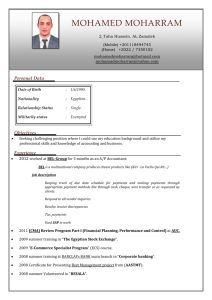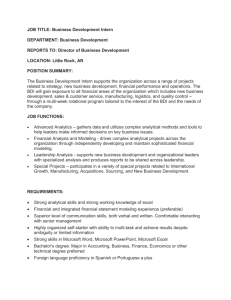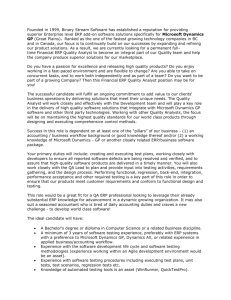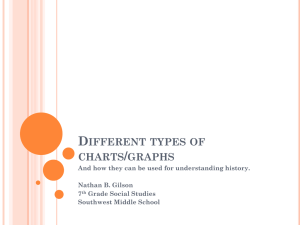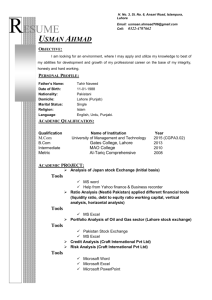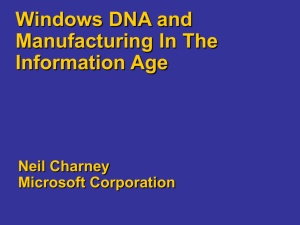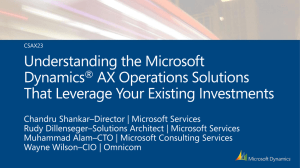Best accounting software for small businesses
advertisement
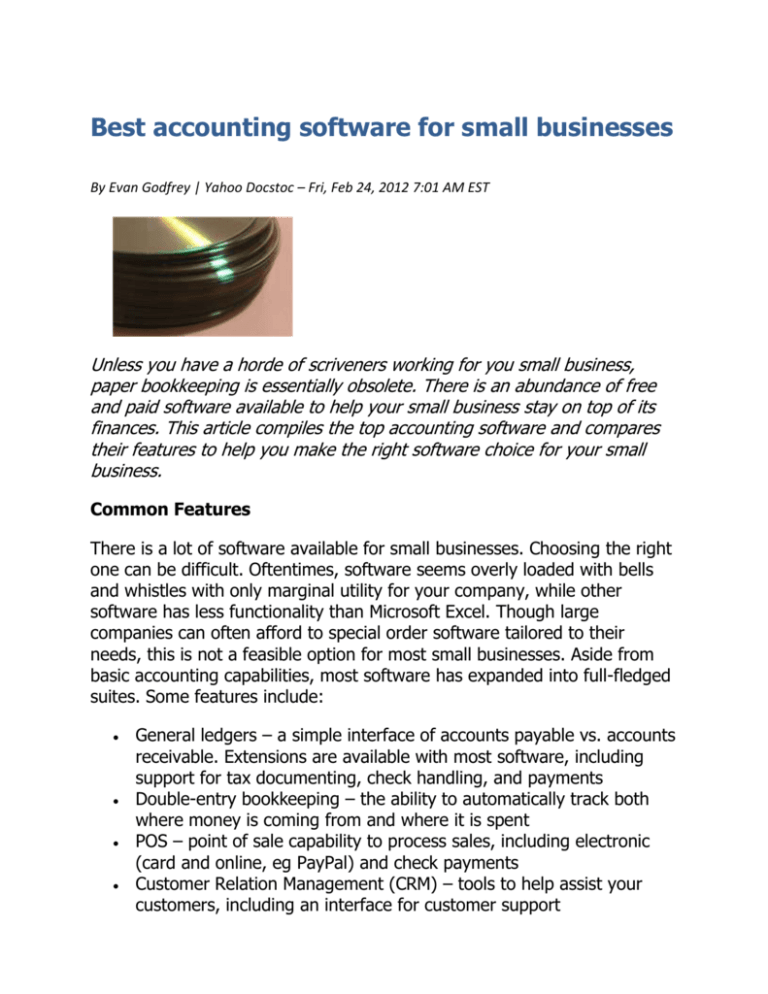
Best accounting software for small businesses By Evan Godfrey | Yahoo Docstoc – Fri, Feb 24, 2012 7:01 AM EST Unless you have a horde of scriveners working for you small business, paper bookkeeping is essentially obsolete. There is an abundance of free and paid software available to help your small business stay on top of its finances. This article compiles the top accounting software and compares their features to help you make the right software choice for your small business. Common Features There is a lot of software available for small businesses. Choosing the right one can be difficult. Oftentimes, software seems overly loaded with bells and whistles with only marginal utility for your company, while other software has less functionality than Microsoft Excel. Though large companies can often afford to special order software tailored to their needs, this is not a feasible option for most small businesses. Aside from basic accounting capabilities, most software has expanded into full-fledged suites. Some features include: General ledgers – a simple interface of accounts payable vs. accounts receivable. Extensions are available with most software, including support for tax documenting, check handling, and payments Double-entry bookkeeping – the ability to automatically track both where money is coming from and where it is spent POS – point of sale capability to process sales, including electronic (card and online, eg PayPal) and check payments Customer Relation Management (CRM) – tools to help assist your customers, including an interface for customer support representatives and IT personnel that can effect customer payments or accounts Enterprise Resource Planning (ERP) – more of a suite type than a feature, ERP is a comprehensive set of tools for everything from financial planning, human resources, and manufacturing and warehouse management. Software with ERP is meant to connect virtually every part of your business under one interface Inventory Management – rather self-explanatory. This can be integrated with POS features to automatically keep track of inventory based on sales and scanned bar codes Software as a Service (SaaS) – while some business software is standalone, an increasing number are being made available exclusively online. This trend towards cloud computing keeps data in a decentralized location Paid Software vs Open-source Software There are free and pay options available for accounting software. Aside from the obvious issue of payment, there are pros and cons for each option. Paid software has the advantage of accountability and updates, whereas free, open-source programs tend to have more add-ons, extensions and helpful communities. The Top 7 Accounting Software After reviewing dozens of options, this is my list of the top 7 software options. You can get a full summary of their features on their websites. 1. 2. 3. 4. 5. 6. 7. 8. Peachtree (now known as Sage 50) Xtuple Postbooks Bookkeeper Intuit Quickbooks SQL-Ledger GNU Cash Nola Pro Microsoft Excel Not every business will need specialized software options to fit their accounting needs – Microsoft Excel has many powerful features and is already installed in many offices. Project Instructions 1. Review the competing software applications. 2. Develop criteria for selecting the package you would use in your business. 3. Select a package based on that criteria, 4. Explain your selection and the packages you considered but did not select. 5. Expected length: 3 paragraphs. 6. Be prepared to describe to the class your business, the package you selected and why.
